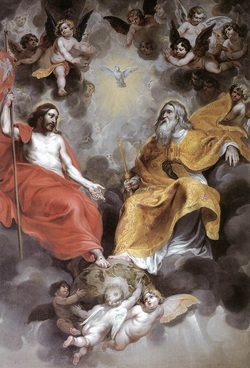 Holy Trinity (Hendrick Van Balen )
Holy Trinity (Hendrick Van Balen ) Last week we celebrated Pentecost, and in the older calendar the Church keeps an “Octave” of the Holy Spirit: an entire week of Pentecost Masses just like after Easter Sunday. Thus the Paschal Octave following Easter, and the Holy Spirit Octave following Pentecost, serve as bookends to the Church’s most glorious liturgical season, that of Eastertide. Trinity Sunday, today, stands at the end of all of this, because the Trinity the deepest mystery, beyond even Incarnation and the Resurrection. It takes us down into the core of all being, into the essence of God’s inner dynamism. God is one, but within this fundamental unity, God is three, a community of persons. He is one, but never alone, an eternal exchange of love between Persons. How do we know this? Certainly not by our own intelligence or anything in the natural world, but only because God has revealed it in Sacred Scripture. In today’s Gospel, Jesus’ final command is to baptize, that is, to seal all peoples with this mark of divine community: in the name of the Father, and of the Son, and of the Holy Spirit. Baptism makes us capable of real communion with others because we have been configured to the community of the Holy Trinity itself.
The diabolical seeks to drive apart communities, to destroy relationships between persons. The very word “diabolus” means “to split in two.” When the diabolical approaches to disfigure your relationships, it will see the mark of the Three-in-One and fall back. We defend ourselves from Satan simply by making the sign of the Cross, the Sign of the Holy Trinity. In the rite of exorcism, for example, the priest continually makes the Sign of the Cross both over himself and over the penitent. We sign ourselves with the Holy Trinity every time we pray, and every time we enter the Church. We must make this Sign well—prayerfully, thoughtfully and confidently. The sign of the Trinity is the sign of love. It is our testimony that Love—the eternal exchange of love between Father, Son, and Holy Spirit—is at the core of all reality. Mother Teresa once found a woman in the gutter, a mess of open sores and crawling with worms. She patiently bathed her and dressed her wounds. The whole time the woman shrieked and swore at her, but Mother Teresa only smiled at her. Finally the woman snarled, “Sister, why are you doing this? No one does this kind of thing. Who taught you?” Mother Teresa simply said: “My God taught me.” The woman paused and said “I want to know your God.” Mother Teresa kissed her on the forehead and replied, “You know my God. My God is called love.”
Trinitarian dicta
You’ve heard the phrase “unity in diversity.” We need both our individual identity and our identity within a wider community, because we reflect the Trinitarian core of all reality. You’ve heard the phrase “e pluribus unum?” It’s on the back of that $20 bill in your wallet, because it’s on the Great Seal of the United States of America. Fifty States united into one great nation, e pluribus unum, “from many, one.” The genius of America consists in fifty unique States bound together in a common purpose, strength in unity, strength in diversity. America’s unity in diversity (which we are losing year by year because we are losing our faith in the triune God) reflects the Trinity. Men at their wits’ end will say: women: you can’t live with ‘em and you can’t live without ‘em. We say this because man constantly seeks the Other, someone different than himself, capable of complimenting him. Thus we reflect the inner dynamism of the Trinity, in whose image we are all made.
And this, by the way, is why the homosexual movement is so distressing. The homosexual impulse seeks not the Other, but rather one like itself. It turns in on itself in habits of self-absorption. Rather than learning to give itself to another, and receive another unlike itself, it fears difference and self-gift. Many suffer grievously from this disorder, but only in God can a person so afflicted find healing. We wonder why so many Americans are accepting so-called gay “marriage.” Can’t folks see how unnatural it is? But you can’t understand what is wrong with the homosexual orientation if you don’t know the Trinity, the fundamental unity in diversity at the core of all reality. You can’t grasp it, you can’t see it, if you do not know God. The maniacal drive for same-sex “marriage” is greatly disturbing, because it aims directly at the image of God himself in man. It aims to destroy that image.
To Love Another
The created universe has many images of unity-in-diversity, even triads that precisely portray the Holy Trinity. St. Patrick used the shamrock, of course, and more scientifically-minded people use the three states of chemical matter (solid, liquid, and gas), while more philosophically-minded people point to the three states of consciousness (past, present, and future). We could go on and on, but we know the stamp of the Holy Trinity deep within our own persons. We need to be alone, but we also need to be with others. Christian friendship, and marriage in particular, so obviously emanates from the mutual exchange of love between Father, Son, and Spirit. The mystery of the Trinity is inscrutable and unsearchable, in the words of St. Paul in our Epistle: the greatest of all mysteries. But in the end, the Holy Trinity dwells in every human heart. We sense our own self-identity, and yet have no identity apart from others. Let us surrender our wills to this most fundamental reality, the mutual exchange of love. Let us ask Our Lady, in this last Sunday of May, to teach us how to love the other, the person so different from us, and not to fear the other.
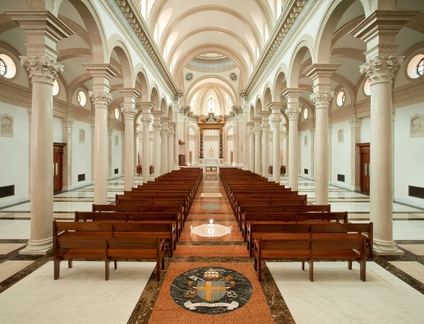
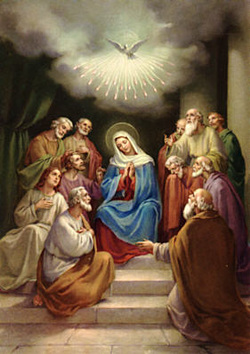

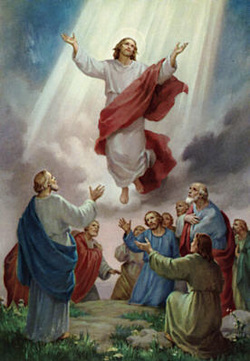

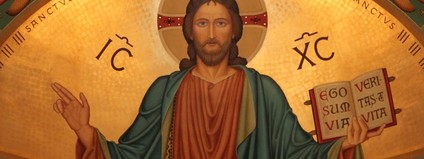
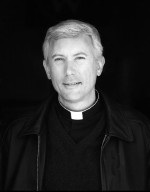

 RSS Feed
RSS Feed